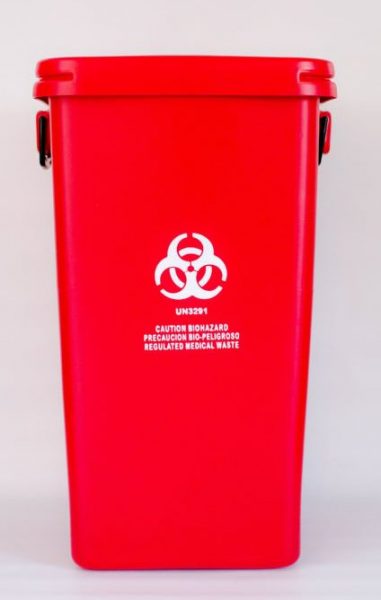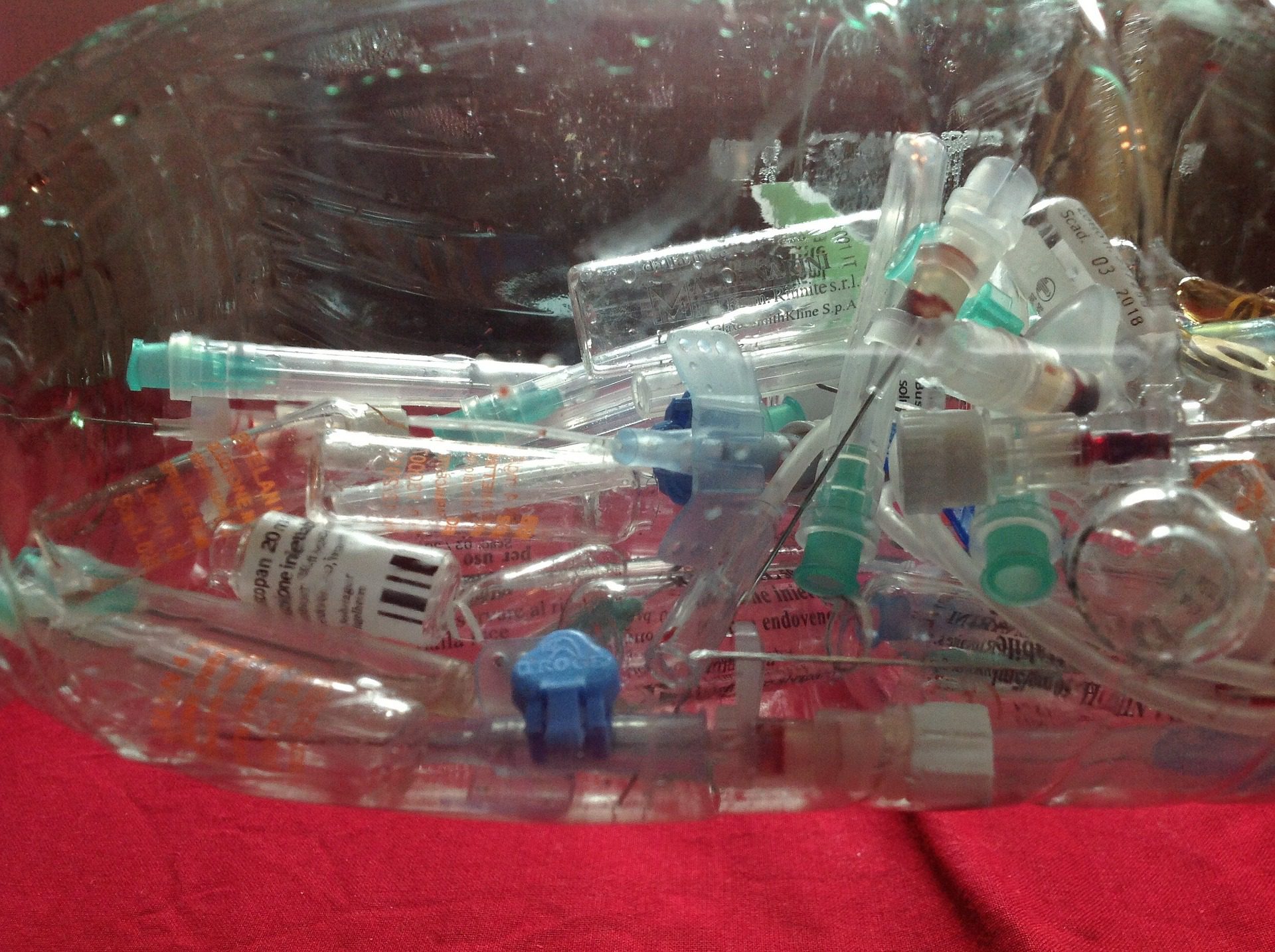Medical Waste Removal Quality: Elevating Security Specifications in Your Center
Stay Ahead of Laws: Specialist Suggestions on Medical Waste Disposal
In a world where the healthcare sector is frequently progressing, it is essential for clinical facilities to remain in advance of laws when it comes to the correct disposal of medical waste. From recognizing the various categories of clinical waste to applying the ideal collection and segregation approaches, this discussion will certainly offer workable tips and beneficial insights to aid facilities remain ahead of laws in the ever-changing landscape of clinical waste disposal.
Understanding Clinical Waste Categories
Understanding clinical waste groups is necessary for appropriate disposal and management in health care centers. Clinical waste describes any type of waste created by health care tasks that may pose a hazard to public health or the atmosphere. It is essential to classify clinical waste accurately to guarantee its safe handling, transport, therapy, and disposal.
There are numerous categories of clinical waste that healthcare facilities need to be acquainted with. The most usual groups include infectious waste, pathological waste, sharps waste, pharmaceutical waste, and chemical waste. Each classification has certain guidelines and guidelines for its correct management and disposal.
Pathological waste refers to human tissues, organs, or body parts that need unique handling and disposal. Drug waste makes up ended, unused, or polluted drugs that need mindful handling and disposal.
Remaining Up-To-Date With Regulatory Modifications
Staying existing with governing modifications is critical for medical care centers to ensure conformity and correct administration of medical garbage disposal. medical waste removal. With policies constantly advancing, it is crucial for health care facilities to stay up-to-date to stay clear of charges, fines, and possible damage to the environment and public health
To remain ahead of governing modifications, healthcare centers need to establish a system for monitoring and monitoring updates. This can be done by signing up for governing e-newsletters, going to workshops and seminars, and actively taking part in industry organizations. Furthermore, centers ought to mark a personnel or team responsible for remaining informed and distributing information to appropriate stakeholders.
Regular interaction with regulatory companies is additionally essential. Medical care centers must establish relationships with neighborhood, state, and federal firms to ensure they understand any modifications in laws that may affect their waste management methods. This can be done via routine conferences, engagement in public comment periods, and positive involvement with regulatory agencies.
In addition, health care centers ought to consider partnering with waste monitoring companies that concentrate on medical garbage disposal (medical waste disposal services with WasteX). These business are usually well-versed in the most recent guidelines and can supply advice and support to make sure conformity
Applying Correct Collection and Partition Approaches
To efficiently handle clinical waste disposal, health care facilities should develop correct collection and partition approaches based on governing standards. Carrying out these approaches ensures the safe handling and disposal of possibly unsafe products, shields the setting, and minimizes the risk of infections and injuries to healthcare employees and the basic public.
Appropriate collection and partition approaches include making use of designated containers and labeling systems. Medical care centers need to supply clearly labeled containers for various kinds of medical waste, such as sharps, contagious waste, pharmaceutical waste, and non-hazardous waste. These containers ought to be color-coded and clearly significant to prevent confusion and advertise very easy recognition.
Furthermore, healthcare centers must train their team on the correct treatments for gathering and segregating clinical waste. This includes enlightening them on the various kinds of waste, the ideal containers to utilize, and the significance of following policies and standards. Routine training sessions and refresher training courses ought to be performed to make sure that employee stay updated on best methods.
Moreover, healthcare centers should develop a system for regular collection and disposal of medical waste. This might entail partnering with licensed waste monitoring business that concentrate on clinical garbage disposal. These firms go to these guys will certainly make sure that the gathered waste is moved and taken care of in conformity with governing needs.
Selecting the Right Disposal Techniques

Incineration is just one of one of the most usual and reliable methods for taking care of certain kinds of clinical waste, such as pathological waste and sharps. It entails the regulated burning of waste at high temperature levels, lowering it to ash. Incineration can release harmful pollutants into the air and contribute to air contamination.

Chemical treatment involves the use of chemicals to reduce the effects of the waste and sanitize. Microwave treatment utilizes microwave power to warmth and decontaminate the waste.
Ensuring Compliance Through Documentation and Training
After carefully thinking about the proper disposal techniques for medical waste, health care facilities must ensure compliance with policies and reduce environmental impact by implementing reliable documents and training treatments. This action is important in preserving a lasting and risk-free environment for both health care workers and the basic public.

Training is just as important in making sure conformity with laws. Healthcare workers who take care of clinical waste needs to receive suitable training on waste partition, handling, and disposal procedures. This training ought to cover topics such as the correct use personal protective devices, identification of various kinds of waste, and the correct disposal techniques for every waste classification. By supplying thorough training, medical care centers can encourage their personnel to make educated decisions and lessen the danger of inappropriate garbage disposal.
Final Thought
To conclude, staying in advance of laws in medical waste disposal is essential for healthcare centers. medical waste removal service. Understanding the various classifications of clinical waste, staying updated with governing modifications, executing proper collection and partition techniques, selecting the suitable disposal methods, and making certain conformity through documents and training are all necessary steps. By complying with these guidelines, health care organizations can properly handle and dispose of clinical waste in a responsible and safe fashion
From understanding the different categories of clinical waste to applying the appropriate collection and segregation techniques, this conversation will certainly supply actionable ideas and important understandings to help facilities remain ahead of guidelines in the ever-changing landscape of clinical waste disposal. - medical waste disposal services with WasteX
The most common categories include contagious waste, pathological waste, sharps waste, pharmaceutical waste, and chemical waste. Health care centers ought to supply plainly classified containers for various kinds of clinical waste, such as sharps, transmittable waste, pharmaceutical waste, and non-hazardous waste. Medical care centers should establish a thorough system to record and track all aspects of clinical waste disposal, consisting of kinds of waste created, quantities, and disposal techniques used. Healthcare workers who handle clinical waste needs to obtain ideal training on waste partition, handling, and disposal treatments.